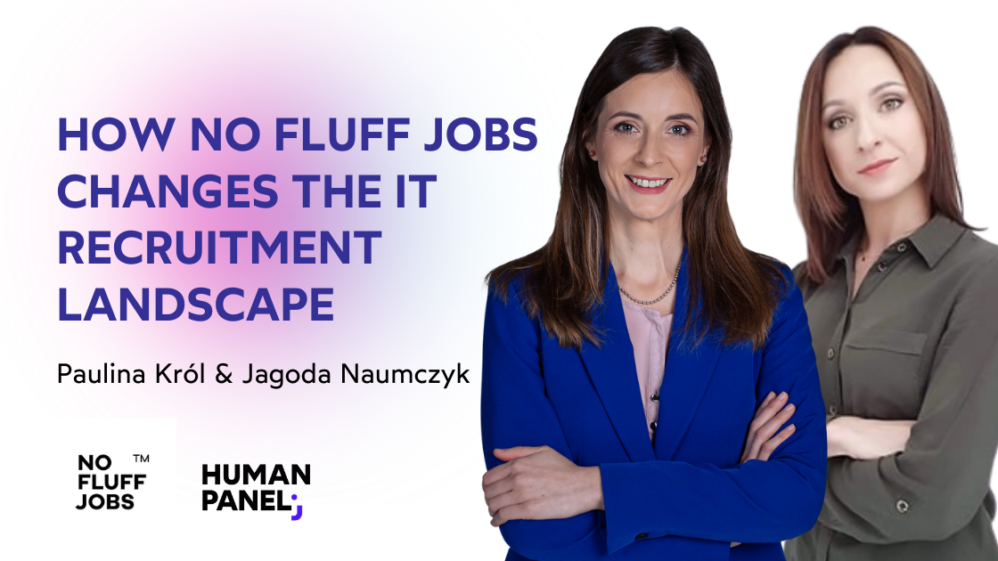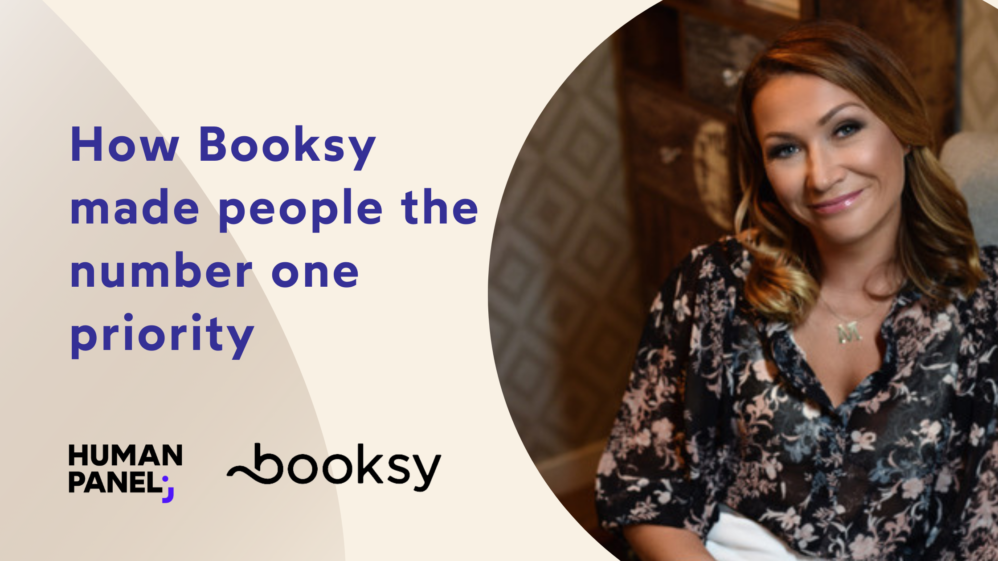The biggest HR challenges when you scale fast – with e-bot7
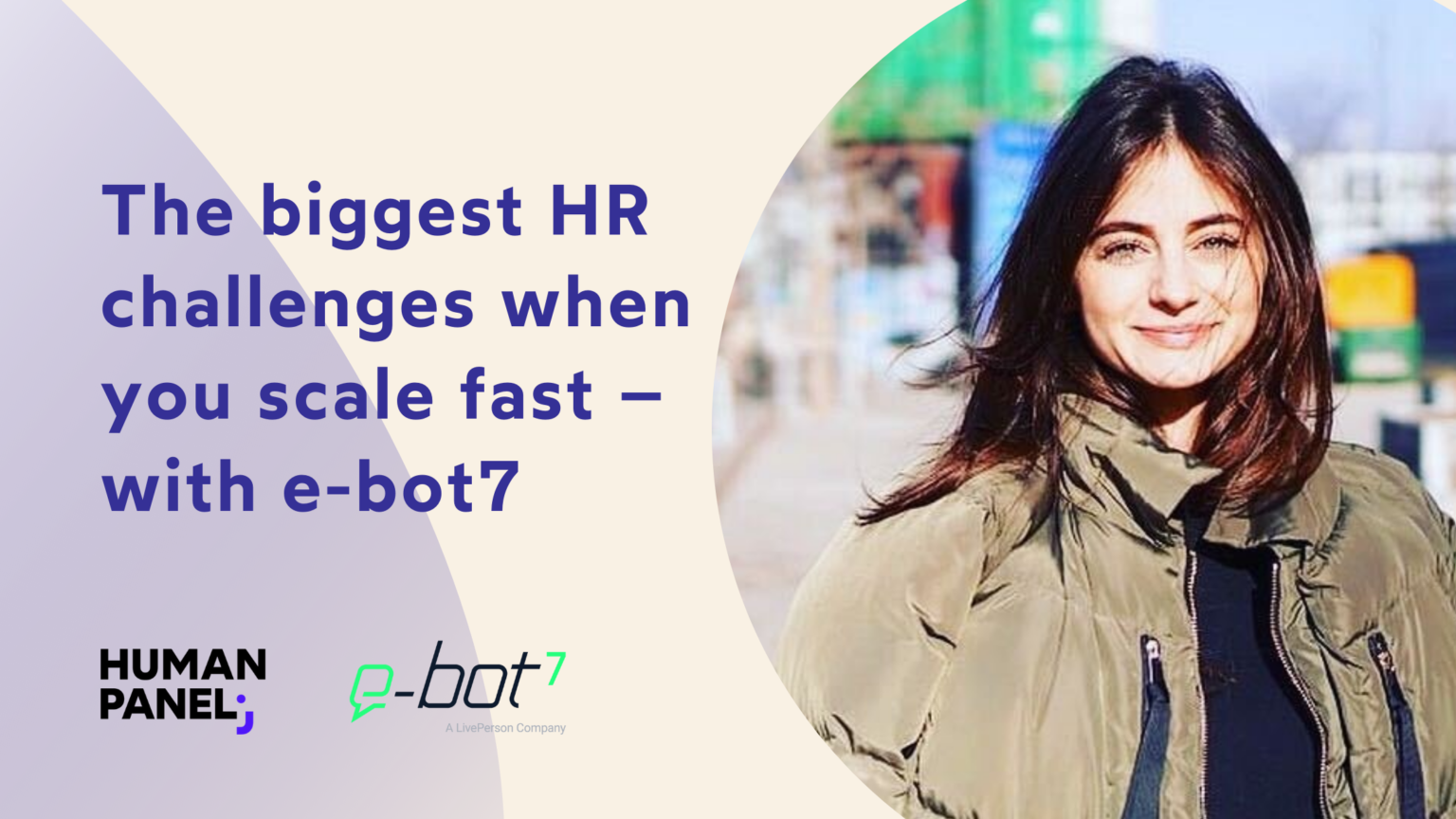
How do you structure your HR processes when you are a rapidly scaling startup? We talk to Chiara de Filippo, Senior Talent Acquisition Manager at e-bot7, about what it takes to make a successful transformation.
Chiara de Filippo is a Senior Talent Acquisition Manager at e-bot7, a Munich-based startup that uses artificial intelligence to increase customer service efficiency. She shared with Human Panel her experience of working in a rapidly scaling company.
Human Panel: How did you start your journey with e-bot7?
Chiara de Filippo: I was working for another startup as an HR manager with a 360-degree role and responsibilities when I realized I was missing the part of my job that I loved the most: recruiting. Then, while researching innovative startups in Munich, I came across e-bot7. The company got me interested because it operated in AI, which I had already dealt with during my studies.
I found the product – an AI chatbot – really fascinating from both a technical and psychological perspective, so I decided to apply for a job. Within two weeks I had an offer and I thought, “This is where I see myself”. This was partly because the hiring process was very flexible and I immediately felt connected to my future team and managers.
So you had a good candidate experience!
Definitely.
What was the first big challenge you had to face?
I had three big challenges.
The first relates to my own experience and the moment we all faced at the time – the pandemic and the lockdown. Even though I live only five minutes away from the office, my onboarding took place remotely. Since this is the most important and delicate part of an employee’s journey, I was afraid I would miss out.
It takes more time to build relationships and feel like part of a team when you are hired remotely. But the HR team has done a great job of making all newcomers feel welcome!
The second challenge was the scarcity of data. Of course, that changed very quickly – we implemented an ATS (Applicant Tracking System) and started collecting and analyzing a lot of information, not only from recruitment, but also from other areas.
The third challenge was to work in a hybrid work environment and move all the recruitment processes into the virtual reality. Although it was challenging, it was also fun, and all the candidates I met adapted to the change very quickly. Most of them had already been “digitized”.
Since you built the analytics system from scratch, what were the first data points you collected? Where did you start from?
We started by collecting hiring data. We were looking for a candidate for a very specific technical/commercial position and did not really know how to approach such a niche position. It was the first position I collected data on: applications per open position, candidates per hire, candidates’ journey through our recruitment funnel.
Even this initial data collection provided us with a lot of insights. We realized, for example, that our recruiting process was challenging – but it allowed us to narrow it down to the very best talents.
You have come a long way since then and e-bot7 has grown very quickly.
Yes, we doubled in size last year – from 50 employees to over a hundred.
How big was this challenge on a scale of 1 to 10?
Twenty! But I have to say, we have done a really good job. In my opinion, the most important thing to remember when scaling is to prioritize and focus on the right initiatives. We knew we had to adapt and standardize our hiring process quickly to make it faster, more flexible and more efficient.
Another important consideration when scaling is teamwork – it’s especially critical in a startup environment where resources are always smaller than needs. The chemistry within the team is vital. You need to make sure everyone is pulling together and understands the strategic direction.
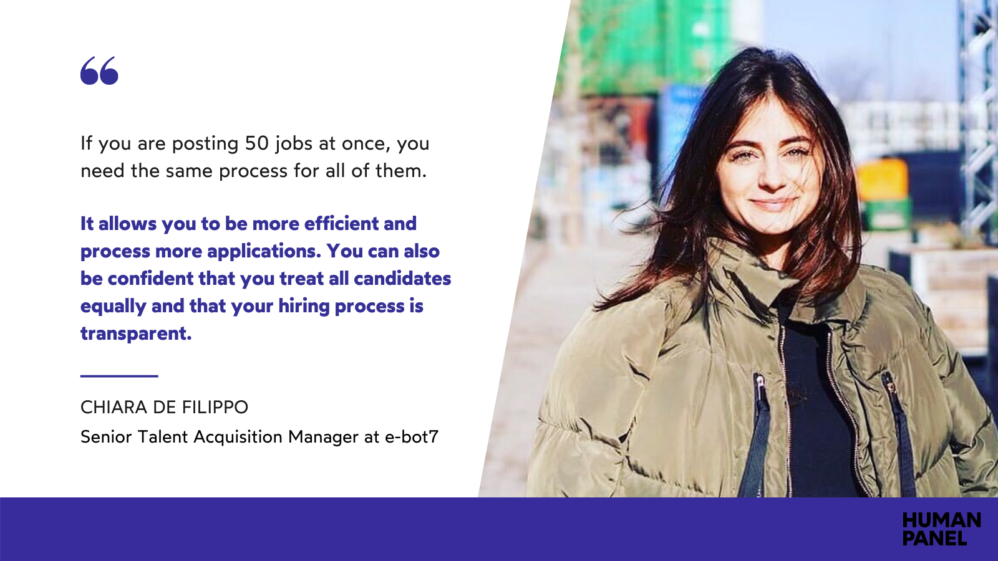
Can you give a specific example of what you had to change in your hiring process?
In a nutshell, we standardized it. If you are posting 50 jobs at once, you need the same process for all of them. First, it allowed us to be more efficient and process more applications. Second, we were confident that we treated all candidates equally and that our hiring process was transparent. Everyone knew what they had to do and what to expect – us and the applicants alike.
Finally, a standardized process allowed us to collect and compare data. For example, we were able to perform a quantitative analysis of the technical challenges completed by the applicants and then make a decision based on that data.
Download our recruitment metrics cheat sheet.
I noticed that your process is also very transparent and there is a detailed FAQ section on the website.
I think that’s just expected these days. When I applied for a job myself, I did not consider companies that did not disclose enough information about the role, responsibilities and objectives of the job. As an applicant, I want to know who I will be working with or reporting to before I even apply. At e-bot7, we want to make sure candidates know what we expect from them.
Now we are taking transparency to the next level by launching a chatbot on our website. Candidates can ask any questions related to the company and the team on HR and get a better insight into the company and the team.
Speaking of recruitment – how would you describe the talent acquisition market in Germany at the moment?
I think we are experiencing the “war for talent” right now. When I talk to other managers at HR, they all face the same challenges, both in technical and business areas. Lots of open positions, not enough candidates. So it’s increasingly important to focus on your employer branding strategy. However, it’s not about perks and benefits, because the new generations of talent are more interested in growth opportunities than ping pong or free fruit.
To attract talent today, you need to understand the value proposition you have for your future candidates and the message you want to send to the outside world. At the same time, focus on your current employees and make sure they are happy with their position and have room to grow. Otherwise, you can expect higher turnover, resulting in higher recruitment costs and efforts.
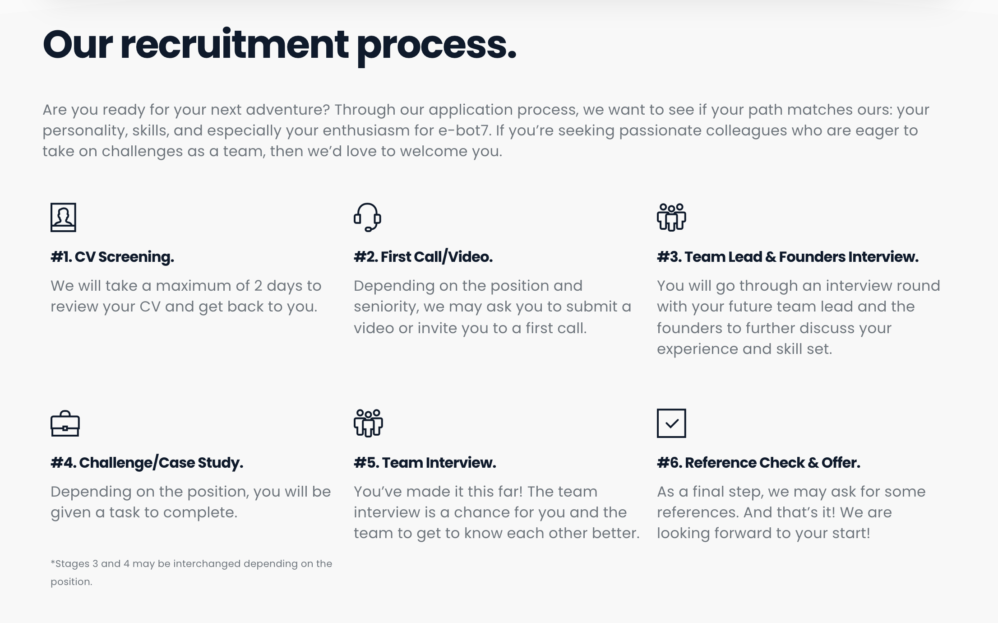
What is your recipe for successful hiring?
What I like to do is have a very personal, honest and transparent relationship with all candidates, a very human approach from the beginning. I always try to take an interest in the candidate’s needs and help them learn more about the company.
Once we have successfully hired someone, we focus on the first three months that they spend at e-bot7. We conduct an in-depth onboarding survey, followed by team and employee satisfaction surveys to assess what we are doing well and what we need to improve. Most importantly, our actions and initiatives come from feedback from our new employees, not from our assumptions.
And the recipe for successful employee retention?
That’s a million dollar question! At e-bot7, retention strategies are among our hottest topics – we started exploring them a few weeks ago, and we have already developed several initiatives. For example, we just introduced “retention conversations” with all team members. Usually, such conversations are held with the so-called “top performers,” but we treat all employees as irreplaceable A-players. We create personal development plans for every member on every team so everyone feels like their career is headed in the right direction. We want our employees to grow – both personally and professionally.
For me, rule number one is to understand not just how one employee is doing, but how the whole team is doing. What can we do to help employees thrive in their positions? What might tempt them to consider quitting?
Do you collect any employee retention data?
We collect data points from our semi-annual employee satisfaction survey, as well as qualitative data from feedback sessions and one-on-one meetings. We monitor the numbers closely: turnover rates, turnover by team and seniority, the effectiveness of our retention strategies. This helps us act quickly when we discover a “hot spot,” but at the same time we focus on long-term initiatives and forecast the results of our work.
What are your KPIs for the coming months?
First of all, we are looking to grow even more in the next year, and we currently have about 40 open positions. So that’s my official company-wide KPI: attracting and hiring the right talent and making them thrive.
My personal goal is to have a positive impact on people’s lives – in this case, candidates’ lives. I want to build relationships with them and make sure they learn something – something about themselves or something about the application process, even if the hire is not successful for them this time.
I always stay in touch with candidates and give them personalized feedback so they feel like they are getting something back for all the effort and time they put into the application process. That’s what I can do: help them improve. Even if they are not successful now, they can – and will – be in the future.
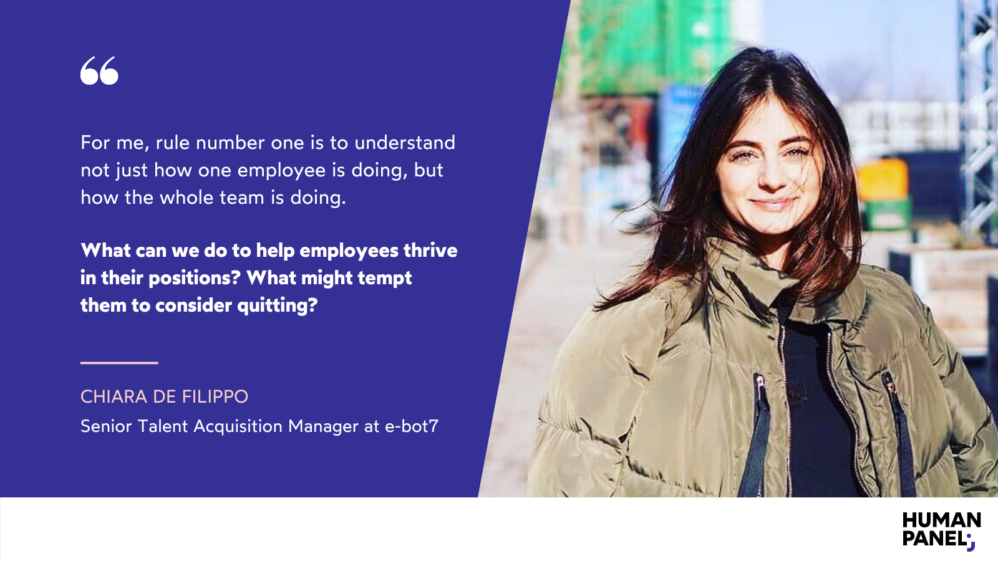
What do you think are the trends that will shape HR in 2022?
I think the most important trend will be the transformative impact that the pandemic will have on recruitment and talent management. We, the people at HR, now have a responsibility to ensure that the positive changes that have taken place are maintained – and that’s not so obvious.
For example, the pandemic has greatly changed the employee experience through hybrid or remote working. So now is the time to rethink. Table tennis in the office is no longer a perk, because sometimes we do not even have an office! Perks like this need to be replaced with strategies for employee mental health and wellbeing. At e-bot7, we just launched a free platform where our employees can access professional coaches and psychologists.
Another area worth mentioning is the candidate experience, which has changed and will continue to evolve. The fact that we hire globally brings new challenges, the most basic being working in different time zones. How do you create a sense of connection among team members on the other side of the globe? It is our, HR, responsibility to make everyone feel welcome, included, and important to the company.
Are you a fast-growing startup wanting to get the most out of employee data and see the stories behind numbers? Become a data-driven organization today and manage your HR through measurable KPIs, not assumptions and gut feelings. Sign up for a free demo and see how Human Panel can help you with achieving your goals.
Discover all Human Panel features





